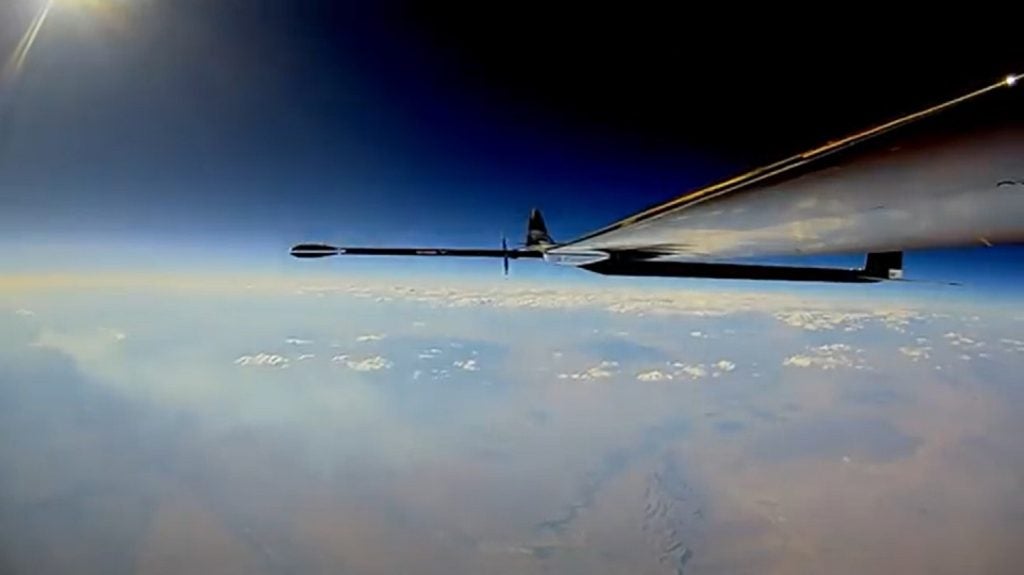UK defence prime BAE Systems has completed a stratospheric flight trial of the company’s PHASA-35 high altitude pseudo satellite (HAPS) uncrewed aerial system (UAS), a key milestone in the programme which began in 2018.
Over a 24-hour period, the PHASA-35 reached a maximum altitude of 66,000ft, reaching the stratosphere, before landing. The trial, completed last month in New Mexico in the US, allowed engineers to assess the performance of the experimental solar-electric drone within the outer-reaches of the planet’s atmosphere.
Designed by BAE Systems’ subsidiary Prismatic to operate above the weather and conventional air traffic, the PHASA-35 is intended to provide ultra-long endurance intelligence, surveillance, and reconnaissance (ISR) capability. The PHASA-35 performed its maiden flight in 2020.
The platform could also be used in the delivery of communications networks including 4G and 5G, as an alternative to traditional airborne and satellite systems.
The PHASA-35 programme sits within FalconWorks, a new centre for research and development within BAE Systems’ Air sector. The PHASA-35 has a 35-metre wingspan and carries a 15kg payload, and uses solar electric cells and photo-voltaic arrays to provide energy during the day which is stored in rechargeable cells to maintain flight overnight.
According to BAE Systems the trial assessed the performance of the platform across a range of areas and is the first in a series of tests to confirm system performance, support development activities, and validate test pints to enable the PHASA-35 to be made available in defence and commercial markets internationally.
The latest trials took place from Spaceport America in New Mexico, flying in the White Sands Missile Range, and were sponsored by the US Army Space and Missile Defense Command Technical Center.
A number of companies, such as European aerospace giant Airbus, are pursuing the development of HAPS platforms as ISR moves ever higher into the atmosphere with the development of improved sensors and optical solutions. However, a number of incidents have seen the destruction of some aircraft, with their fragile design compared to more sturdy crewed and uncrewed platforms unable to cope with the stresses of high altitude operations.









